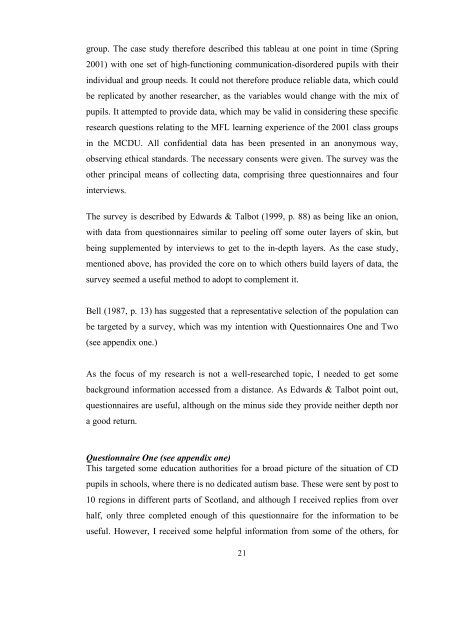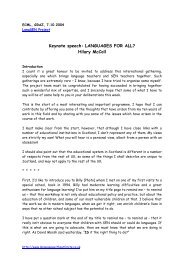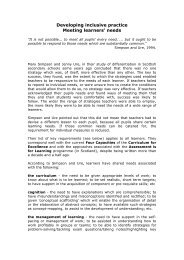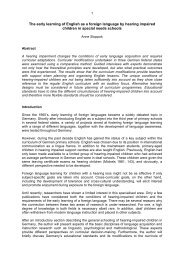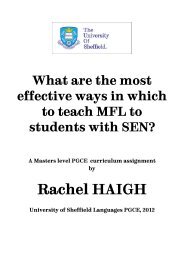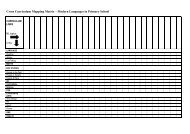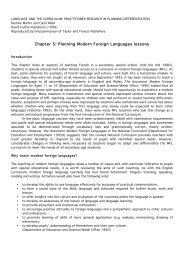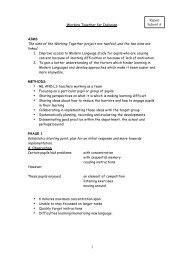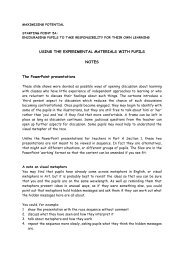CHAPTER THREE METHODOLOGY Justification of methodology ...
CHAPTER THREE METHODOLOGY Justification of methodology ...
CHAPTER THREE METHODOLOGY Justification of methodology ...
You also want an ePaper? Increase the reach of your titles
YUMPU automatically turns print PDFs into web optimized ePapers that Google loves.
group. The case study therefore described this tableau at one point in time (Spring2001) with one set <strong>of</strong> high-functioning communication-disordered pupils with theirindividual and group needs. It could not therefore produce reliable data, which couldbe replicated by another researcher, as the variables would change with the mix <strong>of</strong>pupils. It attempted to provide data, which may be valid in considering these specificresearch questions relating to the MFL learning experience <strong>of</strong> the 2001 class groupsin the MCDU. All confidential data has been presented in an anonymous way,observing ethical standards. The necessary consents were given. The survey was theother principal means <strong>of</strong> collecting data, comprising three questionnaires and fourinterviews.The survey is described by Edwards & Talbot (1999, p. 88) as being like an onion,with data from questionnaires similar to peeling <strong>of</strong>f some outer layers <strong>of</strong> skin, butbeing supplemented by interviews to get to the in-depth layers. As the case study,mentioned above, has provided the core on to which others build layers <strong>of</strong> data, thesurvey seemed a useful method to adopt to complement it.Bell (1987, p. 13) has suggested that a representative selection <strong>of</strong> the population canbe targeted by a survey, which was my intention with Questionnaires One and Two(see appendix one.)As the focus <strong>of</strong> my research is not a well-researched topic, I needed to get somebackground information accessed from a distance. As Edwards & Talbot point out,questionnaires are useful, although on the minus side they provide neither depth nora good return.Questionnaire One (see appendix one)This targeted some education authorities for a broad picture <strong>of</strong> the situation <strong>of</strong> CDpupils in schools, where there is no dedicated autism base. These were sent by post to10 regions in different parts <strong>of</strong> Scotland, and although I received replies from overhalf, only three completed enough <strong>of</strong> this questionnaire for the information to beuseful. However, I received some helpful information from some <strong>of</strong> the others, for21


